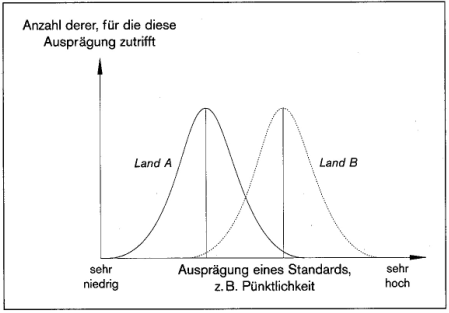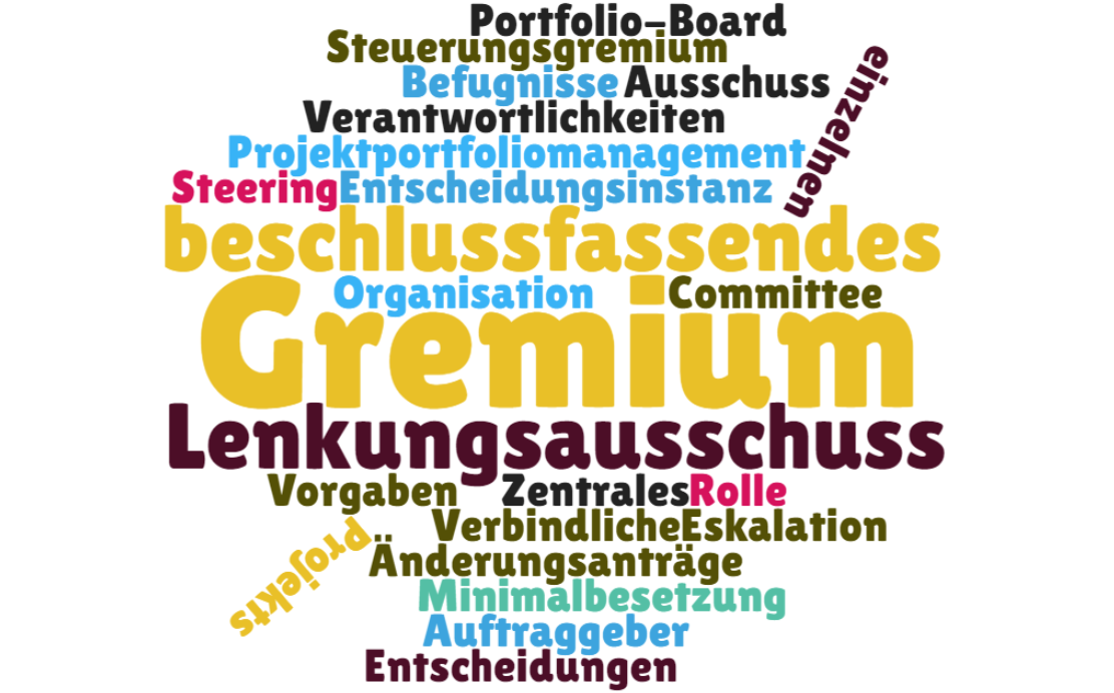Summary
Despite all standardization, special consideration – especially in international project portfolios – must be given to cultural differences among the project participants. The differences should at least be “intercepted”, if not used to advantage. The focus of a project portfolio manager’s work in an international project environment is shifting somewhat away from classic portfolio management tasks such as standardization towards cultural moderation and catalysis. Catalysis in the sense of cleansing intercultural differences and at the same time accelerating intercultural learning.
If there are problems with cooperation in international projects, these usually emerge more strongly than in national projects. Nevertheless, a well-managed international project is praised with more success than a purely national project. With the involvement of a “cultural agent”, these positive synergy effects can be leveraged.
However, not every problem of international projects has cultural origins.
But there are also intercultural problems that are not seen as such.
Cultural differences in international project portfolios
This article is an excerpt of my project study work 10 years ago in the context of the certification as Senior Project Manager (GPM).
Already in 2002, the GPM’s “International Project Work” Section conducted a survey of internationally experienced German project managers and identified the following important problem areas [Hoffmann, H.-E. et al., International Project Management, Munich 2004, pp. 13-14]:
- Cultural differences
- Communication / Language
- Legal and political aspects
- Technology / Infrastructure
- Personal aspects
The greatest importance was attached to the cultural differences.
Differentiation of international differences
This paper does not deal with differences in laws, norms, guidelines or standards of the project business. Although these may also be influenced by the cultural conditions in different countries. Here only the differences or effects of culture on the project are to be considered. Culture is defined as “the change of nature through human actions and expressions and, based on this, the totality of life and work forms of a human group (people, class, religious community, etc.)”.
[Wissen Media Verlag, https://www.wissen.de/lexikon/kultur-allgemein]
The concept of culture
Keller defines culture on the basis of various characteristics [Keller v., E.: Management in foreign cultures: goals, results and methodological problems of culture-comparative management research, Stuttgart, 1982, p. 114ff]:
- Culture is man-made. It is a product of collective social action and individual thinking.
- Culture is supraindividual and a social phenomenon that outlasts the individual.
- Culture is learned and transmitted through symbols.
- Culture controls behaviour through norms, rules and codes of conduct.
- Culture strives for inner consistency and integration.
- Culture is an instrument for adaptation to the environment.
- Culture is adaptively adaptable in the long term.
Hofstede presents culture as a group-specific, collective phenomenon of shared values. [Hofstede, G./Bond, M. H.: The Confucius connection: from cultural roots to econonmic growth, in: Organizational Dynamics, Spring 1988, S. 21]
The cultural programming of a project employee / cultural layers
How does culture influence people, and why can Hofstede speak of a “collective programming of the mind”?
A person is always born into a culture and absorbs it directly. Cultivation”, i.e. cultural programming, takes place as early as the baby age – at the age of 7, most of the culture is already internalized. [Dahl, Stephan (2000) “Introduction to Intercultural Communication”, from the book by Stephan Dahl: „Intercultural Skills for Business“, ECE, London, 2000]
People are suited to different cultural strata in different stages of life depending on their social environment: [Hoffmann, H.-E. et al., International Project Management, Munich 2004, p. 17]
- The innermost and thus first layer originates from childhood and is characterized by
- the country,
- the social class,
- the ethnic group,
- the religious faith or also
- the region
- where they grow up.
- The second layer is made up of vocational training. It often turns out that people from the same occupational group but with different cultural backgrounds understand each other better than people from the same country but from different occupational groups.
- The third and last layer is made up of company-specific norms and behaviours. This is the so-called layer of corporate culture.
Since the majority of people often only move within one cultural group – and a confrontation with another culture takes place only superficially, if at all – “cultural programming” is rarely conscious either. International project management is a pioneer of change here. According to my own experience, only after typical project durations of more than 9 months do questions comparing cultures become more strongly discussed. After about 3 months in the course of the project, the respective advantages of the different cultures involved are adapted. After about 6 months, the first “frustrations” appear in the cultural field. After 9 months the cultural aspects are considered more strongly and also really considered. This means that for project durations of less than 9 months, a mature understanding of culture cannot be expected among those involved in the project.
The project team member/leader continues to behave according to his cultural background and interprets all incidents according to his cultural programming. Thus, the behaviour of foreign project staff is often dismissed as “funny”, as it cannot be explained by their own cultural programming.
An open discussion with another culture is therefore subliminally problematic because it can shake one’s own value system and challenge the questioning of basic values. It therefore seems at least understandable that many project participants avoid this confrontation to its full extent and withdraw into the familiarity of their own culture.
This confrontation is unavoidable for project leaders who live in another country for a longer period of time. It takes about 12 months just to master the obvious rituals and behaviour under the assumption that the local language is spoken fluently. [Dahl, Stephan (2000) “Introduction to Intercultural Communication”, from the book by Stephan Dahl: “Intercultural Skills for Business”, ECE, London, 2000]
Another approach without exact origin provides for the following “culture shock phases”:
- Phase 1 refers to euphoria, travel preparation, travel fever and curiosity about the other country. It usually doesn’t last long.
- Phase 2 is the time of cultural shock when everyday life begins in the new environment.
- Phase 3 is called acculturation, i.e. cultural adaptation, when one learns to live under new conditions, when one already knows some of the foreign values and integrates them into one’s own behaviour.
- Phase 4 is then the mental stability finally gained, which can take on 3 different forms. Either
- Strangers continue to feel strange
- or in the new environment just as well as at home, so can live in both cultures
- or more comfortable in a strange place.
The length of the phases is variable and depends on the duration of the stay in the foreign country.
Conversely, foreigners are also experienced by insiders (locals) in 4 phases:
- Curiosity means positive interest in strangers.
- Ethnocentrism means that insiders judge guests/newcomers/foreigners according to their own standards. One’s own little world is seen as the centre and pivot of the world. Ethnocentrism is related to a culture the same as egocentrism is related to the person.
- Polycentrism means that different people have to be measured with different standards, as well as the ability to understand strangers on the background of their own norms. A moderate form of multiculturalism.
- Xenophilia means that in a foreign culture everything is seen as better than at home.
The cultural programming of a culture
A culture is a group of people who all have the same or at least very similar cultural programming. This means that they almost all behave according to the norms and values of the culture, and measure the behavior of other people against these norms and values. Of course, this does not mean that all persons within a culture are totally identical – they behave only relatively similarly compared to behaviour in another culture, not necessarily compared to their own culture.
Models of cultural contexts
Various models have been developed in the search for explanatory patterns that help to understand the logical connections between norms and rules of a culture. “A model is a simplification of reality. A model can never be complete because it is always a simplification and cannot reflect all aspects of reality. For this reason, there are also different models for intercultural cooperation, each of which represents different aspects. For a project situation it is therefore helpful to be able to compare several models. [Hoffmann, H.-E. et al., International Project Management, Munich 2004, p. 32]
Cultural levels according to Edgar Schein
Schein distinguishes three cultural levels [Hoffmann, H.-E. et al., International Project Management, Munich 2004, p. 22]:
- The first level contains the directly perceptible characteristics such as clothing, food, music or manners. Although these are visible, they require interpretation.
- The second level consists of values and norms that provide guidelines for behaviour in a culture. These are also persons of the respective culture also only partly conscious. Cultural members often assume that these guidelines must also be identical in other cultures.
- The third level contains beliefs that are so self-evident that they are ignored.
The cultural dimension “context reference” by Edward Hall
Hall compares cultures with regard to the strength of their contextual reference [Hoffmann, H.-E. et al., International Project Management, Munich 2004, p. 25]. Under context a situation or message can be understood anything that could be related to it (e.g. tone of voice and experienced or inexperienced colleague) [http://changingminds.org/explanations/culture/hall_culture.htm]. The degree of influence of the context on a situation is cultural and therefore interesting for Hall to define. A culture with a high contextual reference is a culture in which the context enjoys a high degree of attention [Hoffmann, H.-E. et al., Internationales Projektmanagement, München 2004, p. 25].
“Gifts are a sign of appreciation and are expected in cultures with a strong contextual reference to business initiation.” [Hoffmann, H.-E. et al., International Project Management, Munich 2004, p. 65]
Cultural dimensions according to Hofstede
In order to capture culture, a wide variety of approaches were shaped and studies carried out. One of the most important and yet trend-setting studies, which has come into its own in the meantime, records the following four most important dimensions (see table at the end of the article): Hofstede study. The higher the value, the more pronounced the index.): [Hofstede, G.: Intercultural co-operation in organisations, in: Management Decisions, 5-6/1982, p. 53ff; Index and classification: http://www.clearlycultural.com/geert-hofstede-cultural-dimensions/ ; Hoffmann, H.-E. et al., Internationales Projektmanagement, München 2004, p. 26ff]:
- Power distance: The power distance expresses how high the acceptance is to accept power differences.
- Individualism versus collectivism: Here it is described whether the individuals see themselves as individuals and independent or as members of a group/culture.
- Masculinity versus Femininity: Masculinity in a culture is recognized as performance-related or success-related and self-confident. A feminine culture, on the other hand, pays great attention to interpersonal relationships and cooperation.
- Uncertainty avoidance: Threat from uncertain or unknown situations and their avoidance.
The other dimensions are descriptive or approach supporting dimensions, which were added in 1987:
- Time concepts: Here it is defined how strongly a culture is oriented towards the present, the past or the future.
- Conceptions of space: Here it is recorded how socially distanced or introverted members of a culture behave.
- Contextuality: There is a direct or indirect communication. This means how much context or non-verbal communication is anchored in the culture.
- Cognitive processes: How are the thought patterns, the way of thinking, judging and conclusions pronounced in a community. E.g. Analytical, rational versus synthetic, intuitive.
- Religious Concepts: Depending on their religious beliefs, the respective cultural members tend to regard their fate as self-controlled or under foreign control.
Effects of cultures on the project business: In the following, the first four cultural dimensions will be used to record the differences in the international project business.
Power distance
If employees from different cultures are deployed in a project and thus follow different power distances, different aspects have to be considered. My Indian colleagues have a higher power distance than my Scandinavian or German colleagues. This means that an Indian colleague expects more individual instructions and wants to make fewer decisions without consulting his project manager in order to be in his comfort zone. This should be applied up to operational guidelines with which a Mexican colleague as well as the Indian colleague feels “more comfortable” with very detailed guidelines, e.g. when preparing a status report. In comparison, induction training should be more detailed and systematic – based on the same project experience. An Indian colleague feels misplaced in a strongly cooperative project structure and expects clear structures and thus stability in his cultural structures.
Individualism versus collectivism
This dimension deals with the setting of priorities within society on the individual or on the group. In an individualistically pronounced society, the individual is at the forefront. In projects with employees from different cultures who represent different individualism indices (degrees of individuality), measures should be taken to support team building. Cultures such as the USA are considered very individualistic, which means that project staff from this country should be absorbed particularly intensively in the team spirit. Asian employees need intensive feedback continuously during the course of the project. They are dependent on feedback from many colleagues. They will actively demand feedback from all sides. It is advisable to include a feedback round in weekly or 2-weekly meetings / telephone calls that are already planned. North American projects required more portfolio-driven coordination rounds than, for example, Asian projects. The approach and coordination in Asian projects is more culturally rooted.
Masculinity versus Femininity
The Hofstede study found that the differences between women and men in this dimension were less pronounced. The cultural differences among men are more pronounced towards the poles versus . In my Scandinavian colleagues, the focus on interpersonal relationships and quality of life was very clear. Pressure to perform is not conducive in such environments, even rather harmful. The target values of a project are usually defined differently there than in comparison to projects initiated in German-speaking countries. This could be particularly clearly determined with the sensitive topic location dissolutions. Topics which were especially discussed differed between the sites in Sweden and Switzerland. In Switzerland, the focus was on the effectiveness of the closure (short project duration) compared to Sweden, where particular emphasis was placed on employee-oriented scheduling.
Uncertainty avoidance
Uncertainty avoidance can be defined as the degree to which the members of a culture feel threatened by uncertain or unknown situations. The differences can be seen in dealing with these threats. Societies with a strong tendency to avoid uncertainty seek to influence uncertainty through rules, laws, codes of conduct and security measures. Accordingly, particular emphasis should be placed on risk identification in countries with low uncertainty avoidance. In “emerging countries” such as Singapore, Hong Kong and Indonesia, the project environment should place emphasis on detailed risk identification. Project managers from these countries tend to overlook or ignore project risks. Project managers in countries with a high degree of uncertainty avoidance, such as Portugal, quickly identify risks on their own, but are more likely to have problems working out risk avoidance. This means that these project managers tend to bring the same risks to the table without taking the necessary measures. These are more “blocked” by the identified risks compared to other cultural circles.
Time concepts
Essentially, two concepts of time were identified in Hofstede’s study. The linear and the cyclical conception of time. In simple terms, cultures in industrial societies are more subject to a linear concept of time than cultures, e.g. in Asia. The linear approach represents the idea that what was in the past is over forever. In contrast, the cyclical time approach is based on the assumption that there is a constant change between day and night, moons, seasons and meal cycles. This approach is based on the assumption that a current performance weakness can be compensated in the future. These different approaches were actually identified in my portfolio. The degree to which objectives have been achieved and, above all, forecasts are strongly influenced by the cultural perception of time in the project manager’s home country. My Asian project managers are strongly guided by the approach that the current performance weakness of the project can be compensated in the near future. Generally speaking, project progress reports are more optimistic in cultures with a cyclical view of time than in cultures with a linear understanding of time such as the USA and Central Europe.
Another difference in the field of time perception can be observed in sequential or synchronous thinking. This means that in sequential thinking the idea prevails that things should be done one after the other. In contrast to the synchronous concept of time, which is based on the assumption that several things can be done simultaneously. In my portfolio, I was able to recognize this tendency not culturally, but person-specifically. This means that I could derive the differences in phase models, for example, less from their origin than from the personality of the project manager.
The German culture says: Everyone can use his time most efficiently if he has to wait for others as little as possible. The Spanish coinage leads: Everyone can make the most efficient use of their time when the issues at hand are closed in a meeting and no further discussion is necessary. In Spain, the one who breaks off a meeting to keep the next appointment is considered rude. [Hoffmann, H.-E. et al., International Project Management, Munich 2004, p. 20]
Contextuality
The distinction here is made whether in the cultural sphere much context prevails in the spoken (e.g. non-verbal communication; “reading between the lines”) or whether more direct, explicit communication prevails. My European project managers are much more direct / “blunt” in their communication than colleagues from Asia.
Cognitive Processes
Essentially, a distinction can be made here between western and eastern thinking styles. In the West the analytical style prevails and in the East (very pronounced in Asia) the synthetic style. In the West, the problem is broken down, in the East the problem is captured holistically and interlinkingly. Rational and systematic thinking style in the West in comparison to the intuitive and holistic thinking pattern in the East.
Cognitive orientation can also be found in the diversity of problem-solving styles. One of my Indian colleagues is strongly influenced by the “encircling thought”, which means that the problem is surrounded and encircled holistically. Progress is slower, but ultimately more complete and conclusive. In contrast, a German project manager breaks down the problem into its individual elements more strongly and solves subproblems for subproblems. Individual progress can be recognized more quickly, but may require subsequent holistic correction.
Religious concepts
Depending on religious beliefs, different cultures tend to see their fate as foreign or self-directed or controlled. I could not confirm the effects on religious beliefs in my portfolio, since cultural circles with a typically foreign-controlled background nevertheless produce project managers with a strong self-drive. It seems that changes have taken place since the study was conducted or that I have identified exceptional cases.
The cultural dimensions of Fons Trompenaars
Another cultural model was developed by Fins Tromenaars and Charles Hamptopn-Turner with the following seven dimensions: [Hoffmann, H.-E. et al., International Project Management, Munich 2004, p. 29ff]
- Universalism / Particularism: In universal cultures (e.g. Anglo-Saxon and German-speaking countries, Holland and Scandinavia) all people are treated according to the same rules and laws. In particularist cultures, on the other hand, rules and laws are respected by one person, unless an important person would be disadvantaged. The same applies to concluded contracts: [ Hoffmann, H.-E. et al., International Project Management, Munich 2004, p. 67]. In particularist cultures, exceptions to contracts are made on a case-by-case basis. Universalistic cultures do not allow this.
- Individualism and collectivism: Identical with Dimension von Hofstede.
- Emphasis on emotions: This is a comparative measurement of how feelings such as joy, sadness or commitment are shown. Project team members from the Middle East raise their voices to emphasize your emphasis. Asian project workers are associated with a loud voice, anger and lack of control.
- Specific / diffuse cultures: Specific cultures (e.g. Anglo-Saxon countries, Scandinavia and Holland) clearly define roles and assign concrete situations or localities to them. In such cultures, the role of the superior is not necessarily transferred to another (e.g. private) environment. In diffuse cultures (e.g. Arab countries and Africa), assuming a role means that it also applies to a change of environment.
- Performance versus origin: In performance-oriented cultures (e.g. Anglo-Saxon and Scandinavian countries), superiors are respected who perform their tasks competently and demonstrate adequate professional competence. In cultures based on origin (e.g. China and Malaysia), on the other hand, the project manager receives his status through his title, age or family affiliation.
- The relationship to time: In polychronic cultures (e.g. Latin America, Africa, the Middle East, France), time is an unlimited, simultaneous commodity that can stretch. One plans, but can easily adapt the plans. Several things are done simultaneously. For this reason, one can observe a French project team member approaching a meeting and important telephone calls in parallel. In monchronic cultures (Saxon, northern and central European countries), on the other hand, time is considered a limited commodity that must be carefully planned and adhered to. Work is more sequential, i.e. linear.
- Relationship to nature: Indoor controlled cultures (e.g. Anglo-Saxon countries, Northern Europe) want to keep their environment and environment under control. This is closely linked to the belief that one can influence one’s destiny through action. Externally controlled cultures (e.g. Arab, African and Asian countries) shape people in such a way that they see themselves as part of nature and should therefore adapt it to their environment.
Nonverbal Communication
Non-verbal communication and body language is not a direct cultural dimension, but a collection of behaviours.
A direct connection with a cultural dimension as described above does not seem to exist, at least not directly. Basically one can assume, however, that in Asia in particular body language is rather subdued, whereas in Southern Europe body language is used more.
It is therefore advisable to familiarise oneself with the most common symbols before interaction.
Avoidance of intercultural misunderstandings
Intercultural competence is defined as the ability to move successfully in cultural areas other than one’s own. The acting persons should be able to understand the ideas, motives and problems of interlocutors from other cultural areas and to react appropriately. However, since there are still no clear findings in science about the key factors for human adaptation to foreign cultures, there is also no clear understanding of what intercultural competence ultimately consists of.
If a project manager or project member perceives a violation of rules by a person of another culture, his conclusion should not be “he violates the rules”, but “he violates our rules”. [Hoffmann, H.-E. et al., International Project Management, Munich 2004, pp. 18-19]
“So it’s important to understand the behavior of others in the rules of your culture.” [Hoffmann, H.-E. et al., International Project Management, Munich 2004, p. 19]
Cultural misunderstandings can also be reduced by applying universal communication rules:
- Meta-communication: Meta-communication is communication via communication. It is about communicating the meaning and intention of what is said by talking about the rules and patterns according to which communication takes place.
- “My intention is to … experience …”
- “How would you proceed in your culture if you had that intention?”
- Active listening: Active listening means picking up the others in their emotional world. Active listening includes the following techniques:
- Repeating the heard facts – the listener reproduces what the speaker says in his own words. “You mean that…”
- Speaking to feelings – The listener tries to express in words what feelings and sensations he has perceived in the speaker.
- “I have the impression you enjoy it.”
- Inquiry – Inquiry offers the opportunity to present the problem situation even more clearly and to understand it better. “What do you mean by…?
Promoting qualities for learning intercultural competence:
- Ambiguity tolerance the ability to cope with unstructured and contradictory situations
- problem-solving skills
- Empathic ability to read out the empathy, concerns and interests of others from vague hints, gestures or other signals.
- Tolerance of frustration to deal adequately with errors, misunderstandings and failures.
- Conflict ability and conflict tolerance
- Readiness to learn with curiosity
- Strong individual-cultural identity awareness of one’s own cultural imprint as a prerequisite for dealing with people from other countries/cultures
- Distances ability to view oneself from a certain distance
- Humor, the ability to laugh at oneself.
Prejudices and stereotypes
“A collection of information on what behaviours and norms typically prevail in a culture is called a stereotype. [Hoffmann, H.-E. et al., International Project Management, Munich 2004, p. 19] Stereotypes help people to interpret the behaviour of people from another culture.
This in turn allows the classification of further information.
The prejudice arises when the embossed stereotype is no longer changed by new information.
Nobody meets the standards in all points, some even deviate strongly from each other [Hoffmann, H.-E. et al., International Project Management, Munich 2004, p. 21]:

Moreover, some countries are in such a state of flux that there are clear cultural differences between parts of the younger and older generations, such as the former communist states. [Hoffmann, H.-E. et al., International Project Management, Munich 2004, p. 33]
| Country | Power Distance | Individualism | Masculinity | Uncertainty avoidance |
| Malaysia | 104 | 26 | 50 | 36 |
| Guatemala | 95 | 6 | 37 | 101 |
| Panama | 95 | 11 | 44 | 86 |
| Philippines | 94 | 32 | 64 | 44 |
| Mexico | 81 | 30 | 69 | 82 |
| Venezuela | 81 | 12 | 73 | 76 |
| China | 80 | 20 | 66 | 40 |
| Egypt | 80 | 38 | 52 | 68 |
| Iraq | 80 | 38 | 52 | 68 |
| Kuwait | 80 | 38 | 52 | 68 |
| Lebanon | 80 | 38 | 52 | 68 |
| Libya | 80 | 38 | 52 | 68 |
| Saudi Arabia | 80 | 38 | 52 | 68 |
| United Arab Emirates | 80 | 38 | 52 | 68 |
| Ecuador | 78 | 8 | 63 | 67 |
| Indonesia | 78 | 14 | 46 | 48 |
| Ghana | 77 | 20 | 46 | 54 |
| India | 77 | 48 | 56 | 40 |
| Nigeria | 77 | 20 | 46 | 54 |
| Sierra Leone | 77 | 20 | 46 | 54 |
| Singapore | 74 | 20 | 48 | 8 |
| Brazil | 69 | 38 | 49 | 76 |
| France | 68 | 71 | 43 | 86 |
| Hong Kong | 68 | 25 | 57 | 29 |
| Poland | 68 | 60 | 64 | 93 |
| Colombia | 67 | 13 | 64 | 80 |
| El Salvador | 66 | 19 | 40 | 94 |
| Turkey | 66 | 37 | 45 | 85 |
| Belgium | 65 | 75 | 54 | 94 |
| Ethiopia | 64 | 27 | 41 | 52 |
| Kenya | 64 | 27 | 41 | 52 |
| Peru | 64 | 16 | 42 | 87 |
| Tanzania | 64 | 27 | 41 | 52 |
| Thailand | 64 | 20 | 34 | 64 |
| Zambia | 64 | 27 | 41 | 52 |
| Chile | 63 | 23 | 28 | 86 |
| Portugal | 63 | 27 | 31 | 104 |
| Uruguay | 61 | 36 | 38 | 100 |
| Greece | 60 | 35 | 57 | 112 |
| South Korea | 60 | 18 | 39 | 85 |
| Iran | 58 | 41 | 43 | 59 |
| Taiwan | 58 | 17 | 45 | 69 |
| Czech Republic | 57 | 58 | 57 | 74 |
| Spain | 57 | 51 | 42 | 86 |
| Pakistan | 55 | 14 | 50 | 70 |
| Japan | 54 | 46 | 95 | 92 |
| Italy | 50 | 76 | 70 | 75 |
| Argentina | 49 | 46 | 56 | 86 |
| South Africa | 49 | 65 | 63 | 49 |
| Hungary | 46 | 55 | 88 | 82 |
| Jamaica | 45 | 39 | 68 | 13 |
| United States | 40 | 91 | 62 | 46 |
| Netherlands | 38 | 80 | 14 | 53 |
| Australia | 36 | 90 | 61 | 51 |
| Costa Rica | 35 | 15 | 21 | 86 |
| Germany | 35 | 67 | 66 | 65 |
| United Kingdom | 35 | 89 | 66 | 35 |
| Switzerland | 34 | 68 | 70 | 58 |
| Finland | 33 | 63 | 26 | 59 |
| Norway | 31 | 69 | 8 | 50 |
| Sweden | 31 | 71 | 5 | 29 |
| Ireland | 28 | 70 | 68 | 35 |
| New Zealand | 22 | 79 | 58 | 49 |
| Denmark | 18 | 74 | 16 | 23 |
| Israel | 13 | 54 | 47 | 81 |
| Austria | 11 | 55 | 79 | 70 |
The higher the value, the more pronounced the index.







